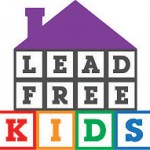Know the facts about lead:
- What is lead? Lead is a heavy metal that is harmful to your health.
- Where is lead found? The most common sources of lead are found in the home! Chipping paint and dust in homes built prior to 1978, tap water, soil and some toys and jewelry are the most common sources of lead. You can’t always see lead, even when it is present.
- What amount of lead is safe? Lead in the body is not safe at ANY level. It only takes a very small amount to cause life-long health problems, including learning disabilities, behavioral problems, and other health issues.
- What are the long-term effects of lead poisoning? Lead can damage organs, stunt neurological development and may even cause death.
- What are some of the warning signs of lead poisoning? Stomach pains, constipation, poor appetite, sleep problems, headaches, issues with sleeping.
- How do I know if I have lead in my home? If your home was built prior to 1978, there is a good chance there is lead in your home but the only way to positively identify lead is with testing. The Department of Health offers free testing if your child has recently been found with elevated levels of lead.
- Who’s responsible for addressing lead sources in the home? The landlord is responsible. Under federal law, at the start of a tenancy, the landlord must provide tenants with a lead disclosure form that details any known lead hazard in your unit or the common areas and a copy of the EPA booklet “Protect Your Family from Lead in your Home“. Under 2004 Childhood Lead Prevention Act, the landlord must also post a notice if a lead hazard has been found in another unit. That notice must remain posted until all documented hazards are properly repaired.
- What if the landlord refuses to address lead sources? Call the Renter’s Hotline at 773-292-4988 M-F, 1-5pm or call the city of Chicago’s Childhood Lead Poisoning Prevention program at 312.747.LEAD[5323]. You may request an inspection. If the landlord refuses to make repairs and old paint is pulling away from the wall, cracking, chipping or peeling and it is a code violation, you can give the landlord a 14-day written notice to reduce your rent. See “Apartment Repairs and Conditions“
- What can I do to reduce the risk of exposure?
- Ask your doctor to test your child for lead
- Regularly wet-mop floors and wet-wipe windows
- Remove shoes when entering the home
- Teach your children to wash their hands before eating
- Do not use pottery for cooking or serving without knowing if the glaze has lead
- Do not disturb paint without protecting your family from the dust
- Feed your child a diet high in iron, calcium and vitamin C – all help fight lead in the child’s body
- Test your water for lead and use a EPA approved filter
- Test soil around home and do not plant a garden before confirming that soil is safe
- Regularly check recall lists for toys, jewelry and other household items which may have lead
Still can’t find the answer? Send us your questions. Please allow several days for a response. Or to speak with a Healthy Homes Organizer, call 773.292.4980 ext. 225.

